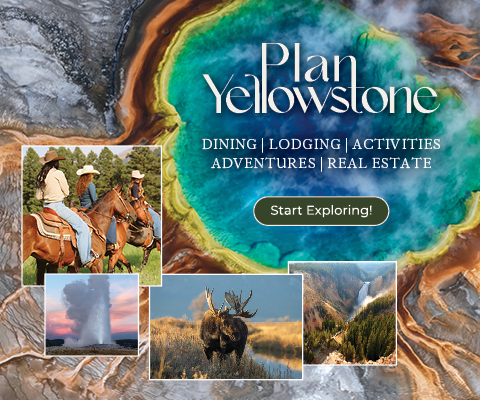By Todd Wilkinson EBS Environmental Columnist
The other day I was on a Zoom call with students from the Yale School of Forestry and Environmental Sciences who were taking a class taught by Dr. Susan G. Clark. Her curriculum focuses on how to save some of the last remaining wildland ecosystems on Earth.
Clark and I have been friends for more than 30 years. When she’s not delivering lectures at Yale, she spends much of her time at her home in the town of Jackson, Wyoming, and is located right across the street from the National Elk Refuge.
Clark, founder of the Northern Rockies Conservation Cooperative, had asked me to discuss the fate of the Greater Yellowstone Ecosystem and my work both as a writer and founder of the nonprofit journalism site, Mountain Journal, which explores the intersection of humans and nature in a region without parallel in the Lower 48.
In anticipation of a lively exchange with graduate and undergraduate students, I asked them to ponder the amazing map produced by the Wyoming Migration Initiative that illustrates where elk herds move across Greater Yellowstone.
It’s a truly extraordinary thing to have tens of thousands of wapiti migrating seasonally across the landscape—not only because it happens at all, but because human development and land-use patterns, including outdoor recreation, have reduced or eliminated such movements elsewhere.
Greater Yellowstone is, in many ways, the last great large mammal ecosystem still left standing in the American West.
And the truth is we are losing this place. It’s occurring right now, in real time, right in front of our noses and while wildlife experts and land managers concur with this premise, citing accumulating evidence, there is currently no plan or sense of urgency to save it.
What I asked the bright young minds from Yale to ponder is not what appears on the elk map, but what’s missing? Federal, state, county, local and private property jurisdictions can be delineated with elk migrations flowing across the cartography like rivers.
What’s absent, I said, is a chronicle of the seasonal migrations and movements of other species, as in: bison, mule deer, pronghorn, moose, bighorn sheep, and wolverines. All of these animals migrate, too, and they need spaces and habitat not overrun by humans to keep doing it. Grizzlies and wolves peregrinate too, as do bald eagles, peregrine falcons, trumpeter swans, sandhill cranes, bobcats, lynx, and wild neotropical songbirds.
Greater Yellowstone is a vast symphony of wildlife whose melody flows like notes across a beautiful, complicated, harmonious score of sheet music. This is the reason why it warrants being compared to the other great wild ecosystem, the Serengeti in East Africa. This is our version of that and yet, by neglect, indifference, law of mass awareness of what we have right before our eyes—and add to that a fragmented way of thinking about it—we are losing this place.
Unless we get undistracted and change the way we’re doing business, any future SOS distress call—“Save Our Serengeti”—is destined to be too little, too late. Next week, I am hoping to have a discussion with citizens who share a passion for Greater Yellowstone and comprehend that what sets this place apart is not its stature as a human playground, or next real estate play, but it’s wildlife.
Good work is being done but it clearly isn’t happening fast enough. All of us have a role in its stewardship. Like the sheet music that speaks to Greater Yellowstone’s marvel of remnant biodiversity, citizen voices of advocates represent the vital chorus. Join the discussion online, which you can access remotely on Thursday, March 4, at 6 p.m.
Let’s have a serious, heartfelt chat among people near and far who love this place and know that we need a plan—a vision—to safeguard the miracle that is Greater Yellowstone.
Here, I want to amicably lean upon a few people, beyond elected officials, to make a difference in elevating ecological awareness at a mass scale. And that’s the business community, locals and those decamped here amid COVID-19. Jackson Hole, Bozeman, members of the Yellowstone Club at Big Sky, Cody, Red Lodge, Paradise Valley, Madison Valley, and the Centennial have people of means who need to step up to the plate.
Yes, let the words above enter into your consciousness and conscience. Money can buy you stuff, but it can also earn you satisfaction, admiration in your family, community and country for stepping forward to make a plan for saving Greater Yellowstone a reality. Visit Mountain Journal (mountainjournal.org) and drop us a note.
All readers here invited on March 4 to the Teton Public Library’s Zoom session titled “Wildness from the Heart of the American Serengeti: How Are We Gonna Save This Place?”
Zoom link can be found here.
Meeting ID: 919 4949 2284 Passcode: 488398
Todd Wilkinson is the founder of Bozeman-based Mountain Journal and is a correspondent for National Geographic. He also authored of the book “Grizzlies of Pilgrim Creek,” featuring photography by Thomas D. Mangelsen, about famous Jackson Hole grizzly bear 399.












